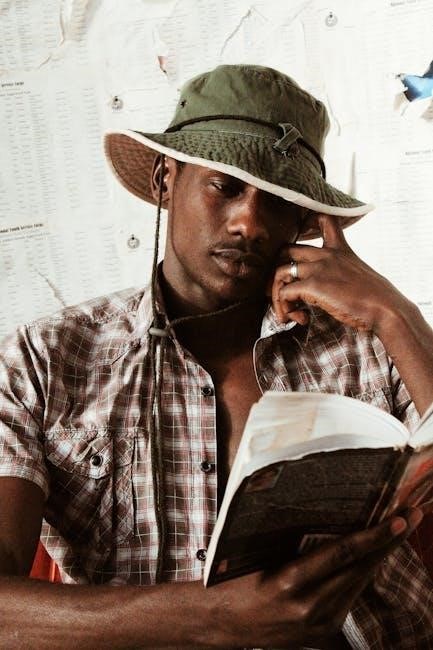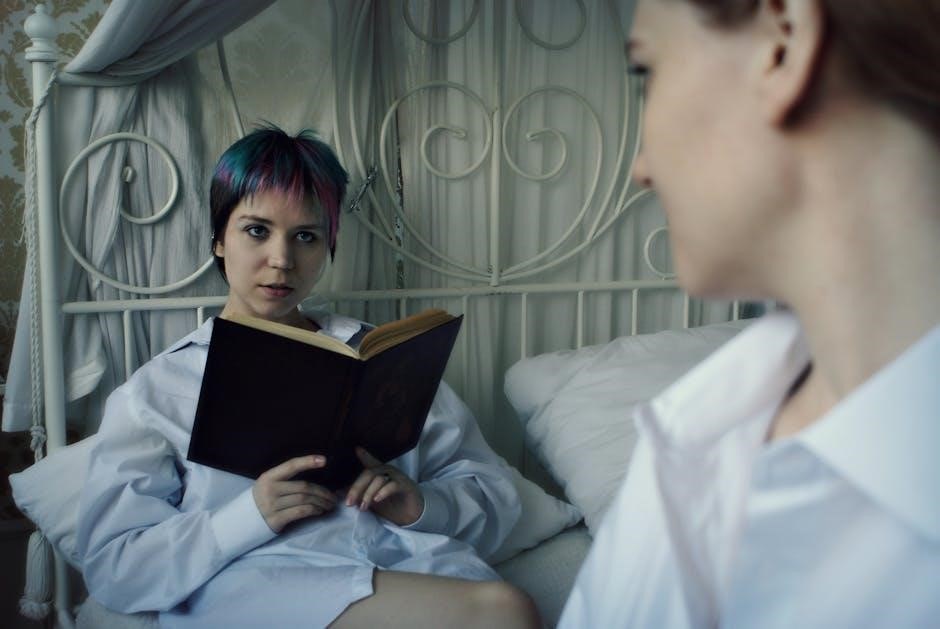The Dead by James Joyce: An Overview
James Joyce’s “The Dead,” the concluding and longest story in Dubliners, delves into themes of love, loss, and Irish identity․ Critically acclaimed, it portrays Gabriel’s journey, marking it as one of Joyce’s finest works․
Dubliners Collection Context
“The Dead” culminates James Joyce’s Dubliners, a collection portraying early 20th-century Dublin life․ Positioned last, it weaves recurring themes from preceding narratives, offering a poignant exploration of love, loss, and Irish identity․ Often considered the collection’s crowning achievement, it reflects Joyce’s potential had he remained in Ireland․ The story masterfully intertwines personal drama with societal themes, providing a reflection on the human condition through Gabriel’s experiences at a party and subsequent existential awakening․ Its inclusion underscores the brittle nature of reality within the collection;

Themes in “The Dead”
“The Dead” explores profound themes such as love and loss, deeply intertwined with questions surrounding Irish identity․ Joyce masterfully uses personal drama to reflect on the broader societal context․
Love and Loss
In “The Dead,” the themes of love and loss are central to understanding Gabriel Conroy’s existential awakening․ The story intricately weaves together the past and present, revealing how past relationships and memories can profoundly impact present emotions and connections․ The characters grapple with feelings of longing, regret, and the ephemeral nature of love, as they confront the inevitability of loss․ Joyce masterfully portrays the complexities of human relationships, exposing the subtle nuances of affection, betrayal, and the enduring power of memory․ Ultimately, “The Dead” serves as a poignant exploration of the human heart’s capacity for both love and sorrow․
Irish Identity
“The Dead” intricately explores the complexities of Irish identity in the early 20th century․ Through the characters’ interactions and reflections, Joyce delves into the cultural and political landscape of Ireland, examining themes of nationalism, tradition, and the lingering effects of British colonialism․ The story portrays the tension between embracing Irish heritage and grappling with the desire for modernity and progress․ Gabriel Conroy’s internal conflict reflects the broader struggle to define Irish identity in a rapidly changing world․ Joyce’s nuanced portrayal of Irish society offers a profound commentary on the challenges and contradictions inherent in forging a national identity․

“The Book of the Dead” by Edwidge Danticat: Summary
Edwidge Danticat’s “The Book of the Dead” centers on a Haitian sculptor, Annie, and her father․ They journey to deliver her sculpture, exploring themes of family and Haitian art during the Duvalier era․
Haitian Art and Family
Danticat’s story intricately weaves together the threads of Haitian art and familial bonds, focusing on the relationship between Annie, the sculptor, and her father․ The narrative explores Annie’s deep reverence for her father, shaped by his perceived history as a political prisoner during the Duvalier regime․ Their journey to deliver Annie’s sculpture becomes a vehicle for examining themes of identity, heritage, and the enduring power of family connections in the face of historical trauma․ The artwork itself serves as a symbolic representation of their shared experiences and cultural background, highlighting the intersection of personal and collective memory․
Ancient Egyptian Book of the Dead: Definition
The Ancient Egyptian Book of the Dead is a collection of mortuary texts containing spells to aid the deceased in the afterlife․ These texts, placed in tombs, were meant to protect them․
Mortuary Texts and Purpose
The Book of the Dead is an ancient Egyptian collection of mortuary texts filled with spells and magic formulas․ These were carefully placed in tombs with the deceased, offering protection and assistance in navigating the perilous journey to the afterlife․ Compiled and reedited around the 16th century BCE, it drew upon earlier Coffin Texts dating back to approximately 2000 BCE․
The primary purpose of these texts was to ensure the deceased’s safe passage and successful integration into the realm of the dead, providing guidance and power against the challenges they might encounter․ It stands as a famous aspect of their culture․

Book of the Dead: Dimensions and Composition
The dimensions of a Book of the Dead varied, with lengths from 1 to 40 meters․ Composed of papyrus sheets joined together, their widths ranged from 15 to 45 centimeters, showcasing diverse compositions․
Papyrus Length and Width
The physical characteristics of the ancient Egyptian Book of the Dead varied considerably․ Its construction involved piecing together individual papyrus sheets, which affected the overall dimensions․ The length could range dramatically, some scrolls measuring as short as one meter, while others extended up to an impressive forty meters in length․
The width of the papyrus sheets also showed variability, typically falling between fifteen and forty-five centimeters․ These dimensions dictated the space available for illustrations and hieroglyphic text, influencing the layout and artistic style of each unique Book of the Dead․ The size reflected resources․

Analysis of Gabriel’s Journey in “The Dead”
Gabriel Conroy’s journey in “The Dead” showcases an existential awakening․ His experiences at the party lead to profound self-reflection, revealing deeper truths about himself, his marriage, and his connection to Ireland’s past․
Existential Awakening
Gabriel’s journey culminates in a powerful existential awakening․ Initially preoccupied with superficial social interactions, he gradually confronts deeper realities about life, death, and his own identity․ The story’s climax, set against the backdrop of a snowy night, sees Gabriel reflecting on the past and the ephemeral nature of human existence․
This moment of epiphany allows him to transcend his earlier self-consciousness and connect with a more profound understanding of love, loss, and the shared human experience․ Through this awakening, Joyce offers a poignant meditation on the complexities of the human condition and the search for meaning in a transient world․
“Book of the Dead” Anthology Series
The “Book of the Dead” anthology series features a common theme: a worldwide zombie outbreak․ The stories explore diverse reactions to this apocalyptic scenario, mirroring Romero’s films․ These narratives delve into survival and societal breakdown․
Zombie Theme
The “Book of the Dead” anthology series exploits the zombie theme, akin to Romero’s apocalyptic films․ It portrays a global outbreak, showcasing varied reactions to the undead․ Stories delve into survival, societal collapse, and human responses․ Each narrative explores fear, resilience, and moral dilemmas amidst the chaos․ The anthology captures the essence of the zombie genre, examining human nature when faced with unimaginable horror․ It reflects anxieties about societal breakdown and the struggle for survival․ These tales offer a thrilling and thought-provoking exploration of humanity’s darkest fears․ The series explores the zombie theme through different lenses, creating a diverse and compelling collection․
The Dead: Critical Acclaim and Significance
“The Dead,” the final story in Joyce’s Dubliners, is considered a crowning achievement and one of the finest short stories ever written․ It masterfully intertwines personal drama with broader societal themes․
Finest Short Stories
James Joyce’s “The Dead” holds a significant place in literary history as one of the finest short stories ever penned․ Its profound exploration of universal themes, such as love, loss, and identity, resonates deeply with readers․ The story’s nuanced characters and evocative setting contribute to its enduring appeal․
Joyce’s masterful prose and insightful observations on the human condition elevate “The Dead” to the status of a literary masterpiece․ Its critical acclaim stems from its ability to capture the complexities of life and the subtleties of human relationships․ The story’s lasting impact solidifies its position as a cornerstone of short fiction․
